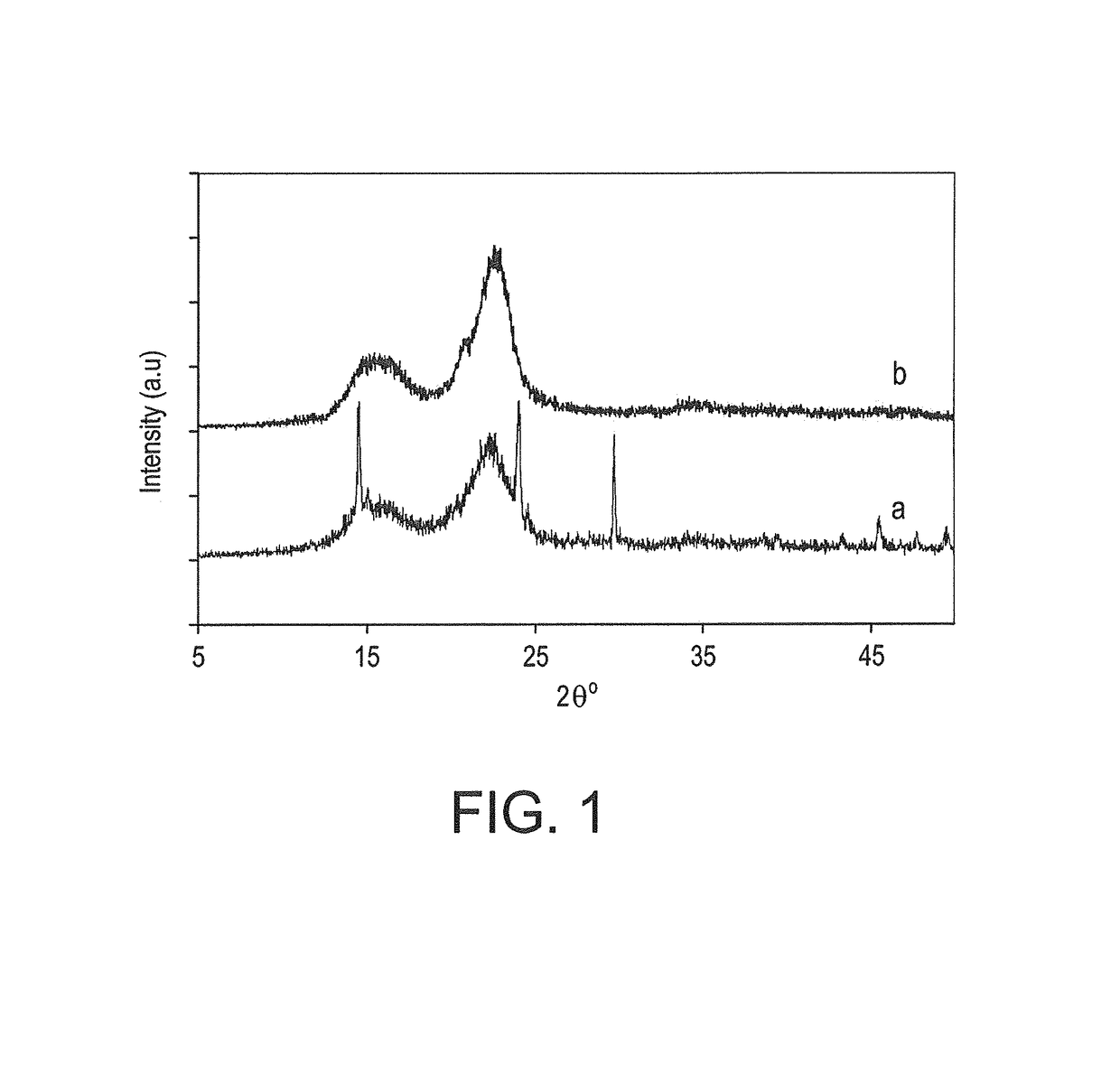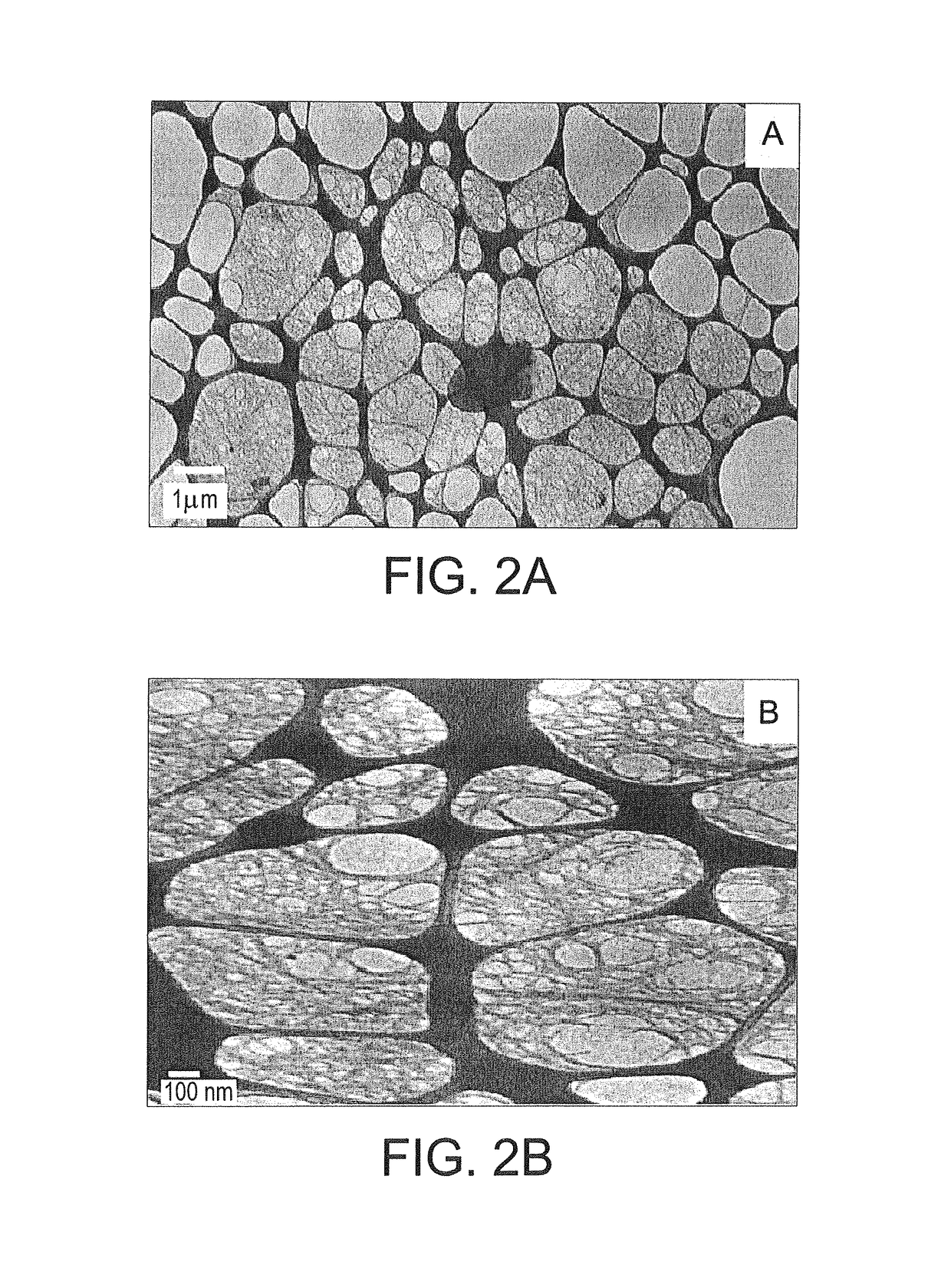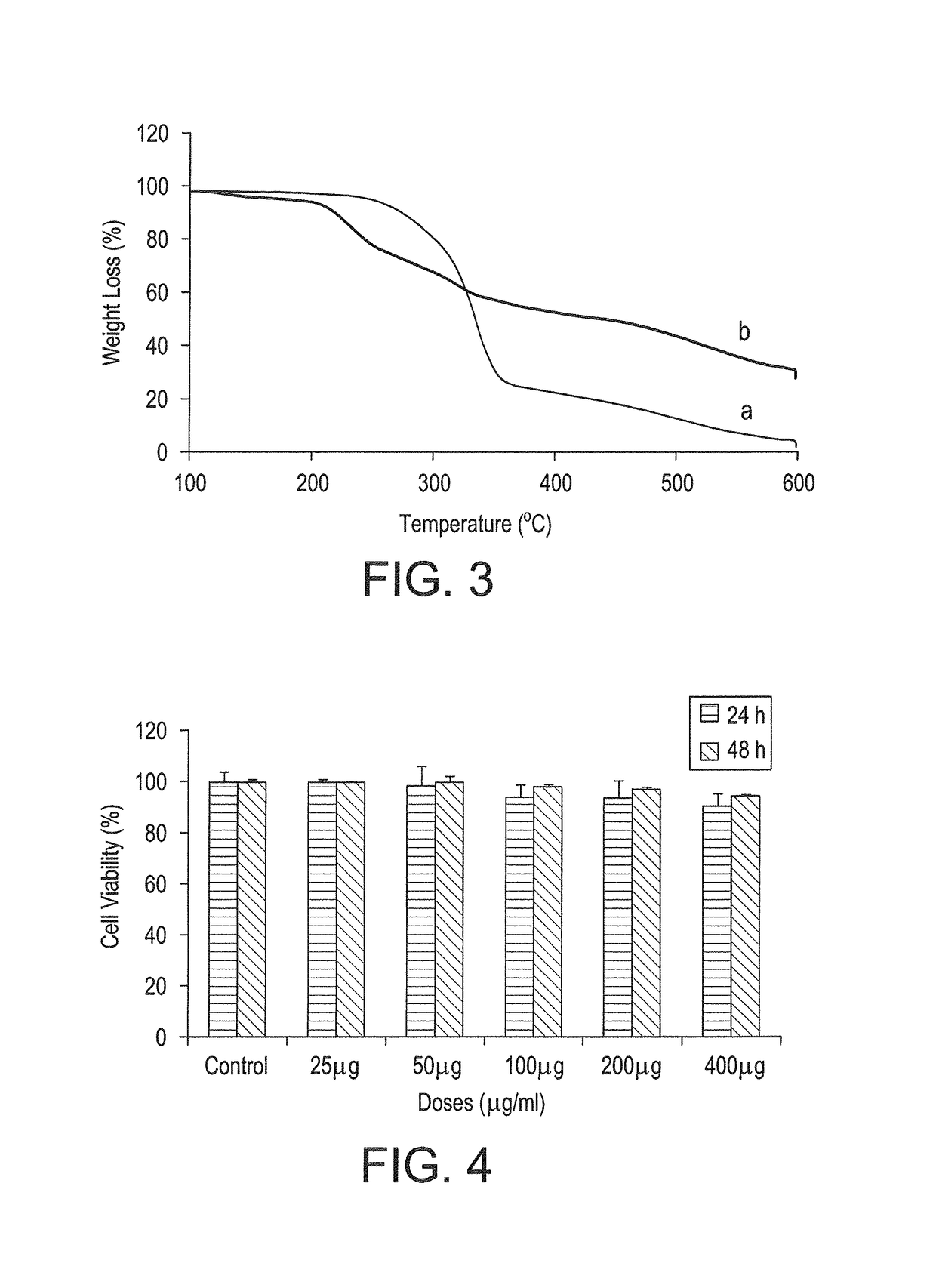Method of fabricating biocompatible cellulose nanofibrils
a technology of cellulose nanofibrils and nanofibrils, which is applied in the field of biocompatible cellulose nanofibrils, can solve the problems of limited use of stem cells in therapeutic applications, low differentiation efficiency, and no research on cellulose nanofibril fabrication from , achieve the effect of easy attraction of human mesenchymal stem cells
- Summary
- Abstract
- Description
- Claims
- Application Information
AI Technical Summary
Benefits of technology
Problems solved by technology
Method used
Image
Examples
example 1
Preparation of Cellulose Nanofibrils
[0035]A sample of Borassus flabellifer leaf stalk agro-waste was collected from Tirunelveli, India, and subsequently dried and pulverized. A total of 10 g of the agro-waste was immersed in a 4% sodium hydroxide solution and kept at 120° C. for 3 h. The alkali-treated agro-waste was washed twice with distilled water to remove the remaining alkali solution and dried at 50° C. for 8 h. The sample was then bleached at 90° C. for 3 h using a 1:1 solution of acetate buffer (27 g NaOH and 75 mL acetic acid in 1 L water) and 1.7% sodium hypochlorite. The bleached agro-waste sample was washed until the pH of the material was neutral and dried at 50° C. for 8 h. It was then mixed with a solution of 64% sulfuric acid (8.75 mL / g) at 45° C. for 30 min under stirring. Following hydrolysis, the solution was diluted ten-fold with distilled water and centrifuged at 5000 rpm for 10 min. The obtained pellet was washed with water and ultrasonicated for 15 min. The sa...
example 2
Cellulose Nanofibril Film Preparation
[0036]The cellulose nanofibrils were dispersed in water and poured into a petri dish, which was kept in a hot air oven at 50° C. until the sample was dry. The obtained transparent film was used for cell attachment studies.
example 3
FTIR Testing
[0037]Samples of raw, bleached and cellulose nanofibrils prepared according to Example 1 were characterized by Fourier Transform Infrared (FTIR) spectroscopy. Fourier transform infrared (FTIR) spectra of the samples were measured using a smart performer (attenuated total reflectance (ATR) accessory) with the Nicolette Nexus 470. In the FTIR spectra, three regions were compared: (i) from 3600 to 3000 cm−1, corresponding to the —OH stretching of cellulose, which is associated with the hydrogen bonding pattern; (ii) between 1500 and 1200 cm−1, related to the CH2 wagging and COH in-plane bending; and (iii) from 1180 to 800 cm−1. The results indicate that alkali treatment and bleaching remove the hemicellulose and lignin fractions from Borassus flabellifer leaf stalk.
PUM
| Property | Measurement | Unit |
|---|---|---|
| diameter | aaaaa | aaaaa |
| diameter | aaaaa | aaaaa |
| temperature | aaaaa | aaaaa |
Abstract
Description
Claims
Application Information
 Login to View More
Login to View More - R&D
- Intellectual Property
- Life Sciences
- Materials
- Tech Scout
- Unparalleled Data Quality
- Higher Quality Content
- 60% Fewer Hallucinations
Browse by: Latest US Patents, China's latest patents, Technical Efficacy Thesaurus, Application Domain, Technology Topic, Popular Technical Reports.
© 2025 PatSnap. All rights reserved.Legal|Privacy policy|Modern Slavery Act Transparency Statement|Sitemap|About US| Contact US: help@patsnap.com



